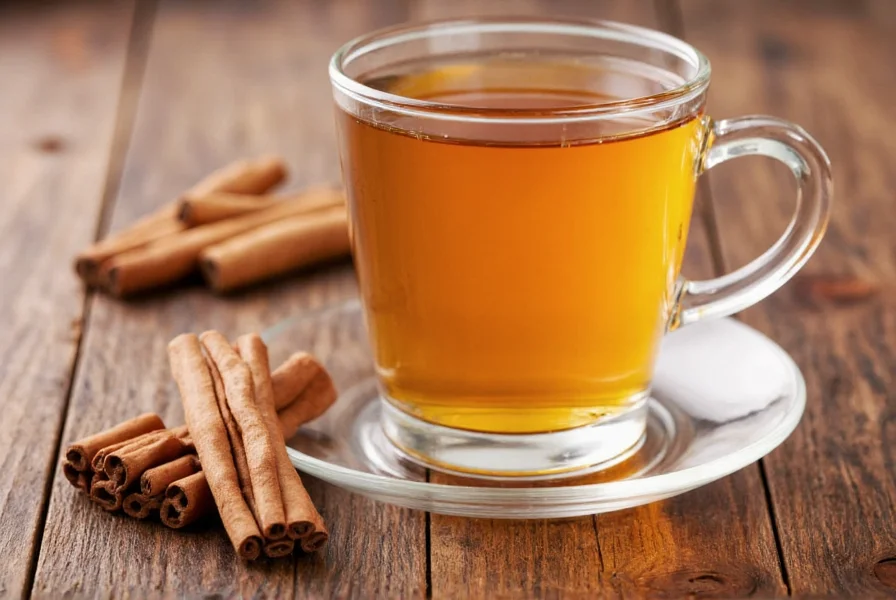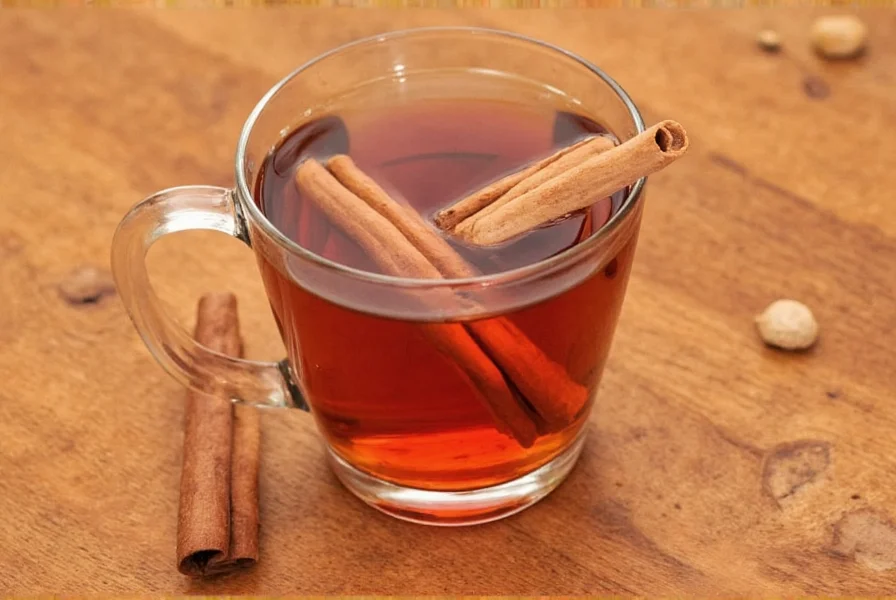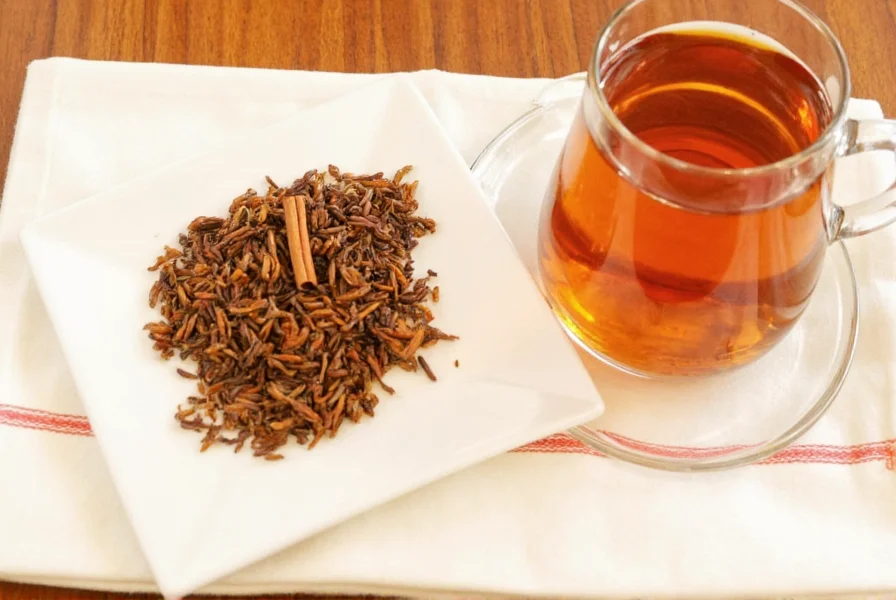Cinnamon tea properties have fascinated health enthusiasts and researchers alike for their potential wellness benefits. This aromatic beverage, made by steeping cinnamon bark in hot water, contains bioactive compounds that may support metabolic health and provide antioxidant protection. Unlike many herbal remedies, cinnamon tea's properties are backed by growing scientific evidence, though important distinctions exist between laboratory studies using concentrated extracts and the effects of regularly consumed brewed tea.
Key Bioactive Compounds in Cinnamon Tea
The primary properties of cinnamon tea stem from its complex chemical composition. When cinnamon bark simmers in hot water, it releases several beneficial compounds that contribute to its distinctive flavor and potential health effects. The most significant of these include:
| Compound | Natural Source | Concentration in Tea | Primary Effects |
|---|---|---|---|
| Cinnamaldehyde | Cinnamon bark oil | Moderate (varies by preparation) | Anti-inflammatory, antimicrobial |
| Polyphenols | Whole cinnamon bark | High (especially with longer steeping) | Antioxidant, cardiovascular support |
| Eugenol | Cinnamon essential oil | Low to moderate | Pain relief, antimicrobial |
| Coumarin | Cinnamon bark (higher in cassia) | Variable (depends on cinnamon type) | Potential liver concerns at high doses |
The specific properties of your cinnamon tea depend significantly on which cinnamon variety you use. Ceylon cinnamon (Cinnamomum verum), often called "true cinnamon," contains lower levels of coumarin but similar beneficial compounds to the more common cassia cinnamon (Cinnamomum cassia). For regular consumption, Ceylon varieties offer the health properties of cinnamon tea with reduced potential concerns.

Scientifically Supported Health Properties
Research into cinnamon tea properties reveals several promising health benefits, though it's crucial to distinguish between studies using concentrated cinnamon extracts and actual brewed tea consumption.
Blood Sugar Regulation
One of the most studied cinnamon tea properties relates to glucose metabolism. A 2020 meta-analysis published in Nutrition Research Reviews examined 16 clinical trials and found that cinnamon supplementation showed modest improvements in fasting blood glucose levels. While these studies typically used 1-6 grams of cinnamon powder daily (equivalent to multiple strong cups of tea), the mechanism appears related to cinnamon's ability to enhance insulin signaling.
For those exploring cinnamon tea for blood sugar management, proper preparation matters. Studies suggest simmering cinnamon for at least 10 minutes increases the extraction of beneficial compounds. However, cinnamon tea should never replace prescribed diabetes medications without medical supervision.
Antioxidant Capacity
Cinnamon ranks among the most antioxidant-rich spices. The ORAC (Oxygen Radical Absorbance Capacity) value of cinnamon exceeds 250,000 μmol TE/100g, significantly higher than many fruits and vegetables. When brewed as tea, these antioxidant properties remain substantial, though less concentrated than in the whole spice.
Regular consumption of cinnamon tea contributes to your daily antioxidant intake, potentially reducing oxidative stress. A 2019 study in Antioxidants demonstrated that cinnamon compounds can activate the body's natural antioxidant defense systems, providing protection at the cellular level.
Practical Considerations for Maximizing Benefits
To fully leverage the properties of cinnamon tea, preparation method significantly impacts the resulting beverage's composition:
- Steeping time: Simmering cinnamon sticks for 10-15 minutes extracts more beneficial compounds than quick steeping
- Temperature: Water just below boiling (90-95°C) optimizes extraction without degrading sensitive compounds
- Additives: Adding black pepper may enhance absorption of certain compounds through piperine content
- Frequency: Moderate daily consumption (1-2 cups) appears most beneficial based on current evidence
The health properties of cinnamon tea work best as part of an overall healthy lifestyle rather than as a standalone solution. Combining cinnamon tea with other healthy habits creates synergistic effects that amplify its potential benefits.
Potential Concerns and Limitations
While exploring cinnamon tea antioxidant properties and other benefits, it's essential to consider potential limitations:
Coumarin content varies significantly between cinnamon types. Cassia cinnamon contains approximately 1% coumarin by weight, while Ceylon cinnamon contains only about 0.004%. The European Food Safety Authority recommends limiting coumarin intake to 0.1 mg per kg of body weight daily. For a 70 kg adult, this translates to approximately 2.5 grams of cassia cinnamon daily, or roughly 2-3 cups of strong cassia cinnamon tea.
Certain populations should exercise caution with cinnamon tea properties:
- Individuals with liver conditions should monitor intake due to coumarin metabolism
- Those taking blood thinners should consult physicians before regular consumption
- Pregnant women should limit intake to moderate levels (1 cup daily)
- People with cinnamon allergies must avoid it completely

Current Research Gaps
Despite promising findings about cinnamon tea properties, significant research gaps remain. Most clinical studies use cinnamon supplements rather than brewed tea, making direct translation to tea consumption challenging. Future research should focus on:
- Determining optimal brewing methods to maximize specific health properties
- Long-term studies on regular tea consumption (vs. supplements)
- Interactions between cinnamon tea compounds and other dietary components
- Effects on specific populations beyond general adult samples
The existing body of research suggests cinnamon tea offers valuable properties as part of a balanced diet, but should not be viewed as a miracle cure. Understanding both the potential benefits and limitations provides a realistic perspective on incorporating this traditional beverage into modern wellness routines.











 浙公网安备
33010002000092号
浙公网安备
33010002000092号 浙B2-20120091-4
浙B2-20120091-4